Related Research Articles

Booker Taliaferro Washington was an American educator, author, and orator. Between 1890 and 1915, Washington was the primary leader in the African-American community and of the contemporary Black elite.
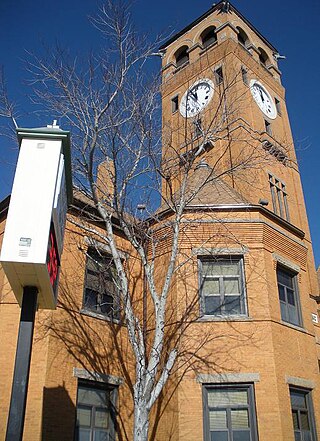
Tuskegee is a city in Macon County, Alabama, United States. General Thomas Simpson Woodward, a Creek War veteran under Andrew Jackson, laid out the city and founded it in 1833. It became the county seat in the same year and it was incorporated in 1843. It is the most populous city in Macon County. At the 2020 census the population was 9,395, down from 9,865 in 2010 and 11,846 in 2000.

Tuskegee University is a private, historically black land-grant university in Tuskegee, Alabama. It was founded on Independence Day in 1881 by the Alabama Legislature.

The Tennessee Centennial and International Exposition was an exposition held in Nashville from May 1 – October 31, 1897 in what is now Centennial Park. A year late, it celebrated the 100th anniversary of Tennessee's entry into the union in 1796. President William McKinley officially opened the event from the White House, where he pressed a button that started the machinery building at the fair; he would visit in person a month later.

Braxton Bragg Comer was an American politician who served as the 33rd governor of Alabama from 1907 to 1911, and a United States senator in 1920. As governor, he achieved railroad reform, lowering business rates in Alabama to make them more competitive with other states. He increased funding for the public school system, resulting in more rural schools and high schools in each county for white students and a rise in the state's literacy rate.
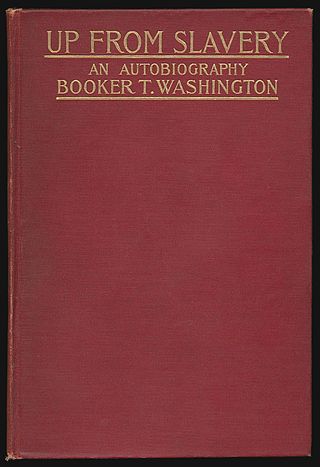
Up from Slavery is the 1901 autobiography of the American educator Booker T. Washington (1856–1915). The book describes his experience of working to rise up from being enslaved as a child during the Civil War, the obstacles he overcame to get an education at the new Hampton Institute, and his work establishing vocational schools like the Tuskegee Institute in Alabama to help Black people and other persecuted people of color learn useful, marketable skills and work to pull themselves, as a race, up by the bootstraps. He reflects on the generosity of teachers and philanthropists who helped educate Black and Native Americans. He describes his efforts to instill manners, breeding, health and dignity into students. His educational philosophy stresses combining academic subjects with learning a trade. Washington explained that the integration of practical subjects is partly designed to "reassure the White community of the usefulness of educating Black people".

James Thomas Rapier was an American politician from Alabama during the Reconstruction Era. He served as a United States representative from Alabama, for one term from 1873 until 1875. Born free in Alabama, he went to school in Canada and earned a law degree in Scotland before being admitted to the bar in Tennessee.
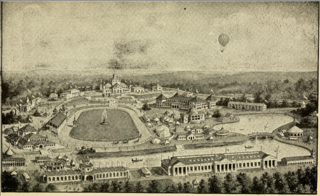
The Cotton States and International Exposition was a world's fair held in Atlanta, Georgia, United States in 1895. The exposition was designed "to foster trade between southern states and South American nations as well as to show the products and facilities of the region to the rest of the nation and Europe."
Wallace Augustus Rayfield (1874–1941), was an American architect and educator. He was the second formally educated practicing African American architect in the United States.

Robert Robinson Taylor was an American architect and educator. Taylor was the first African-American student enrolled at the Massachusetts Institute of Technology (MIT), and the first accredited African-American architect when he graduated in 1892. He was an early and influential member of the Tuskegee Institute faculty.
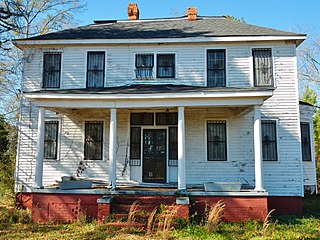
The Calhoun Colored School (1892–1945), was a private boarding and day school for Black students in Calhoun, Lowndes County, Alabama, about 28 miles (45 km) southwest of the capital of Montgomery. It was founded in 1892 by Charlotte Thorn and Mabel Dillingham, from New England, in partnership with Booker T. Washington of Tuskegee Institute, to provide education to rural black students. African Americans comprised the majority in this area, and the state had segregated facilities. Calhoun Colored School was first designed to educate rural black students according to the industrial school model common at the time.

Faunsdale Plantation is a historic slave plantation near the town of Faunsdale, Alabama, United States. This plantation is in the Black Belt, a section of the state developed for cotton plantations. Until the U.S. Civil War, planters held as many as 186 enslaved African Americans as laborers to raise cotton as a commodity crop.
An Alabama's Colored Women's Club refers to any member of the Alabama Federation of Colored Women's Club, including the "Ten Times One is Ten Club", the Tuskegee Women's Club, and the Anna M. Duncan Club of Montgomery. These earliest clubs united and created the Alabama Federation of Colored Women's Club in 1899. By 1904, there were more than 26 clubs throughout Alabama. The most active ones were in Birmingham, Selma, Mobile, Tuskegee, Tuscaloosa, Eufaula, Greensboro, and Mt. Megis.
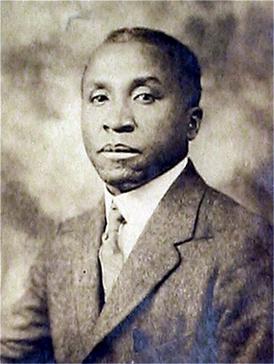
Walter Thomas Bailey was an American architect from Kewanee, Illinois. He was the first African American graduate with a bachelor of science degree in architectural engineering from the University of Illinois at Urbana-Champaign and the first licensed African-American architect in the state of Illinois. He worked at the Tuskegee Institute, and practiced in both Memphis and Chicago. Walter T. Bailey became the second African American that graduated from the University of Illinois.

Cornelia Bowen (1865-1934) was an African American teacher and school founder from Alabama. She was in the first graduating class of the Tuskegee Institute and went on to found the Mount Meigs Colored Institute as well as the Mt. Meigs Negro Boys' Reformatory. Based on the principles of the Tuskegee Institute, where she was trained, Bowen created industrial schools to teach students to thrive from their own industry. She was a member of both the state and national Colored Women's Federated Clubs and served as an officer of both organizations. She also was elected as the first woman president of the Alabama Negro Teacher's Association.

The Black Belt in the American South refers to the social history, especially concerning slavery and black workers, of the geological region known as the Black Belt. The geology emphasizes the highly fertile black soil. Historically, the black belt economy was based on cotton plantations – along with some tobacco plantation areas along the Virginia-North Carolina border. The valuable land was largely controlled by rich whites, and worked by very poor, primarily black slaves who in many counties constituted a majority of the population. Generally the term is applied to a larger region than that defined by its geology.
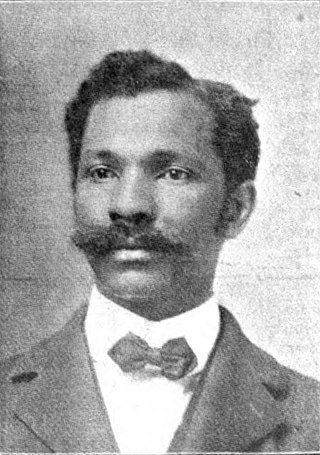
James Munroe Canty was an American educator, school administrator, and businessperson. Canty was an acting principal of the West Virginia Colored Institute in 1898 and is considered by West Virginia State as an acting president. Canty also served as the superintendent of Mechanical Industries for West Virginia Colored Institute from 1893 through 1914.

The American Negro Exposition, also known as the Black World's Fair and the Diamond Jubilee Exposition, was a world's fair held in Chicago from July until September in 1940, to celebrate the 75th anniversary of the end of slavery in the United States at the conclusion of the Civil War in 1865.
James Nathan Calloway was an American agriculturalist. Born in slavery in Tennessee, Calloway graduated from Fisk University before joining the faculty of the Tuskegee Institute. Initially a lecturer in mathematics, he became involved in agricultural science and was appointed manager of the institute's largest farm in 1897. He was selected to lead an expedition to German Togoland in 1900 to promote the production of cotton there. Calloway bred a special strain of the plant suited to local conditions but returned to the United States a year later. The experimental station that he founded remained in use until 1919 and established cotton as a staple crop of the colony. He returned to Tuskegee as farm manager and taught agriculture there until at least 1930.
Louis "Leo" Hudson Persley (c.1888–1932), was an American architect. Persley became the first African American to register with the new Georgia State Board of Registered Architects on April 5, 1920. He was part of what was possibly the nation’s first black architecture firm, Taylor and Persley, a partnership founded in July 1920 with Robert Robinson Taylor. He had several spellings of his name including Louis Hudison Persely, Lewis H. Persley, and Louis Pursley.
References
- 1 2 3 4 5 Owen, Thomas McAdory (1921). History of Alabama and Dictionary of Alabama Biography. S. J. Clarke publishing Company. pp. 557, 567.
- ↑ Economics, United States Office of Farm Management and Farm (1920). Directory of American Agricultural Organizations, 1920. U.S. Government Printing Office. p. 17.
- ↑ "List of Fairs and Expositions". Duroc Swine Breeders' Journal. Morris Printing Company. 1916. p. 177.
- 1 2 3 4 5 6 Wilson, Dreck Spurlock (March 2004). African American Architects: A Biographical Dictionary, 1865-1945 (Revised ed.). New York City, NY: Routledge. pp. 50–53. ISBN 978-1-135-95629-5.